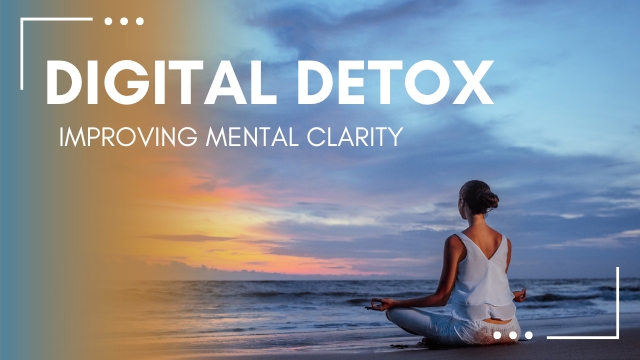In an age where smartphones rarely leave our hands and every spare moment is filled with scrolling, the idea of a digital detox has gone from a wellness buzzword to a psychological necessity. On average, people now spend over 60% of their waking hours engaged with screens. This constant digital presence has created an environment of chronic distraction, overstimulation, and emotional fatigue. And yet, many don’t realise how deeply this affects their focus, relationships, or well-being—until they step away.
Digital detoxing, once a fringe concept practiced by minimalists or monks, has become a mainstream tool for mental clarity. As more people seek relief from information overload, structured screen-free experiences—ranging from personal tech breaks to silent retreats—are being seen as a credible response to digital exhaustion.
What a Digital Detox Actually Means
Contrary to common belief, a digital detox doesn’t require abandoning technology altogether. For most people, especially those whose livelihoods depend on digital tools, a full disconnect isn’t practical. Instead, it’s about creating space—setting boundaries around digital consumption to reduce stress, improve focus, and regain a sense of control.
This might look like avoiding screens after 9 PM, turning off non-essential notifications, or designating phone-free zones at home. For others, it may mean taking entire weekends offline or checking into retreats where devices are surrendered on arrival. The method varies, but the intention remains constant: to reset our relationship with technology and re-centre our attention.
Why It Works: The Neuroscience of Overload
The human brain wasn’t built to process the level of input modern devices demand. Every ping, notification, or breaking headline triggers a subtle stress response in the nervous system. Over time, this continual stimulation elevates cortisol levels and contributes to symptoms like anxiety, mental fatigue, irritability, and sleep disruption.
By stepping away from screens—even for short, structured periods—we give the brain a chance to decompress. Without the pressure to respond, scroll, or multitask, cognitive load is reduced, allowing for improved focus and emotional regulation.
Sleep quality also improves. The blue light emitted by screens has been shown to disrupt melatonin production, delaying the onset of deep, restorative sleep. Individuals who limit screen use before bedtime often report falling asleep more easily and waking up feeling more refreshed.
Emotionally, the benefits can be even more profound. Social media, in particular, plays a complex role in our mental health. While it connects us to others, it also fuels comparison, reinforces unrealistic standards, and shortens attention spans. A digital detox offers space to untangle from this cycle, leading to increased self-esteem and reduced anxiety.
Knowing When It’s Time to Unplug
The signs are often subtle at first—difficulty concentrating, checking your phone reflexively, restlessness during quiet moments, or feeling low after long periods online. These behaviours may seem normal, even expected, but they often point to a deeper sense of digital fatigue.
Other indicators include poor sleep, low energy, and emotional numbness. If the thought of being without your phone for even an hour causes discomfort or panic, it might be time to ask: who’s in control—you or the device?
A digital detox doesn’t have to be dramatic to be effective. Many start small, introducing screen-free evenings or device-free mealtimes. Some go further, dedicating entire weekends to offline living, or exploring structured detox programs that guide them through the process with expert support.
From Short Breaks to Full Retreats
While personal detox routines are effective, the rise of silent retreats offers a more immersive option. Originally rooted in ancient spiritual traditions, these retreats are now being embraced by modern wellness travellers looking for a deeper reset. Participants often hand over their phones at check-in and commit to days of silence, nature walks, meditation, and reflection.
In India, retreats in Rishikesh, Coorg, and Goa have begun offering luxury versions of these experiences—complete with organic meals, spa therapies, and guided mindfulness sessions. Costs can range from ₹30,000 for a short weekend retreat to over ₹2,50,000 for premium week-long stays abroad.
Though silent retreats may seem extreme to some, their growing popularity signals a shift in how we define rest and recovery. The absence of digital distractions isn’t seen as deprivation—it’s viewed as relief.
Reintegrating Mindfully
A digital detox isn’t just about time spent offline—it’s about what happens after. Once the noise dies down, many people return to their devices with greater awareness. They become more selective about the apps they use, more intentional about screen time, and more willing to set boundaries that protect their mental space.
It’s not about rejecting technology. It’s about making room for reflection, focus, and presence—qualities that constant connectivity often suppresses. Over time, regular detoxes can help build a healthier, more mindful relationship with technology, where devices serve us rather than dominate us.
Technology isn’t the problem. It’s the pace, the overload, and the loss of boundaries that wear us down. A digital detox gives us the space to reset, not just our devices, but ourselves. It reminds us that we can still choose how we spend our time and attention—even in a connected world.
The next time you find yourself scrolling without purpose or struggling to focus, consider stepping away. Whether it’s an hour, a day, or a full retreat, the silence might be exactly what you need to hear yourself again.





